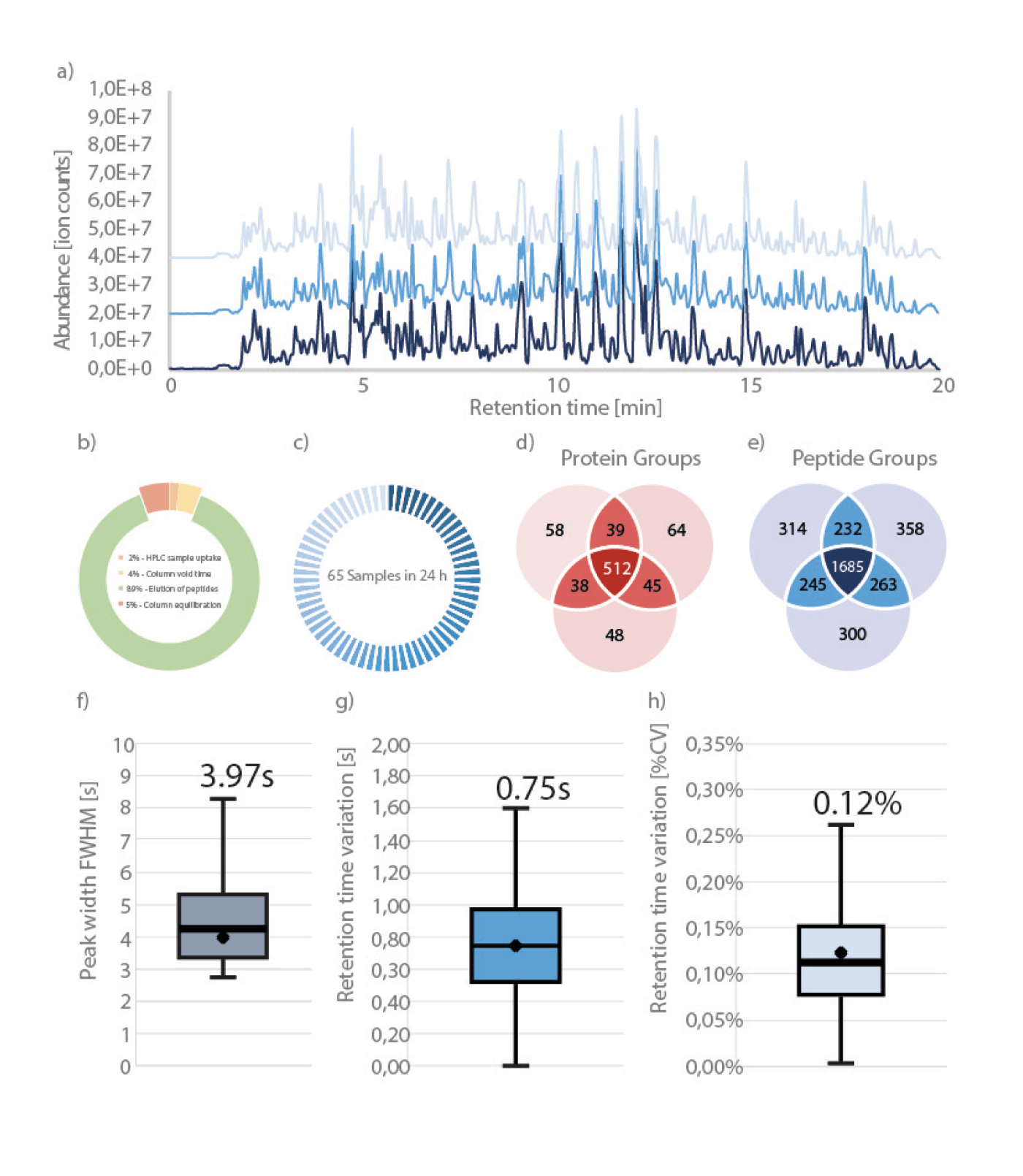Many proteomics laboratories show a keen interest to apply nanoflow MSbased methods to diagnostic and clinical questions. However, such methods can be vulnerable to technical difficulties, such as instable nano-spray, nanocolumn reproducibility and clogging.
This has resulted in increasing interest towards capillary and microflow LC-MS for large quantitative proteomics studies, combining increased throughput, excellent robustness, reproducibility and sensitivity. We have used a µPAC™ capLC column to provide the required chromatographic robustness and reproducibility. Micro Pillar Array Columns use nano-meter precision 2D designs transferred onto silicon wafers and transformed into highly uniform arrays of superficially porous silicon pillars. This eliminates virtually any column to column variability, and the precise positioning of the silicon pillars creates a stationary phase support that minimizes dispersion. µPAC™ columns are operated at significantly lower backpressures than needed to operate current sub-2 µm particle packed-bed columns, positively affecting their lifetime.


To demonstrate the flow flexibility of the µPAC™ capLC column, figure 1 shows the column operated at 2 µL/ min (a), 5 µL/min (b) and 10 µL/min (c), with direct injection of 4 µL sample onto the column.
Figure 2 summarizes the results obtained for a tryptic HeLa cell digest, using the 10 µL/min method with 21 min total runtime. Base peak chromatograms obtained for triplicate injections of 2 µg HeLa cell digest clearly indicate the high level of chromatographic repeatability that can be achieved.
To minimizing overhead time, a direct injection method was configured. Up to 83% of the total time was effectively used to identify peptides at a sample turnover rate of 65 samples per day. Combining the output of all 3 runs resulted in a total number of peptide and protein groups of respectively 3397 and 804, using an UltiMate 3000/ Orbitrap Elite (Thermo Fisher Scientific) LC-MS instrument set-up.
https://www.pharmafluidics.com/products/%c2%b5pac-caplc-column/





